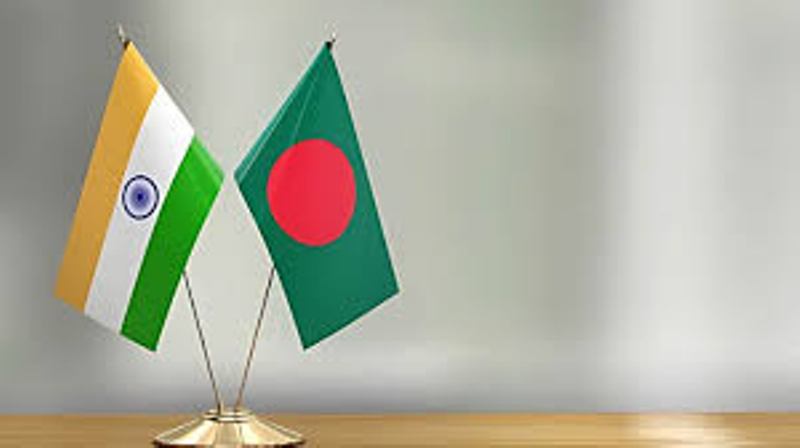For years, a section of Bangladeshi political and intellectual circles painted India as a “bad neighbour”—accusing it of economic bullying and unequal deals. This view has long shaped mainstream opinion in Dhaka. However, a closer look at trade, connectivity, and power-sharing arrangements suggests a more complex reality—one in which Bangladesh has often been the beneficiary of asymmetrical advantages extended by India.
Recent Indian actions in trade policy offer a glimpse into this imbalance. Bangladesh imposed port restrictions on Indian yarn, prompting India to respond with port restrictions on key Bangladeshi exports like garments and jute. While the tit-for-tat may seem abrupt, the broader context reveals that for years, India had tolerated skewed arrangements, even at the cost of its domestic industries.
India’s textile and jute sectors are large and labour-intensive. Yet, in the spirit of regional economic integration, New Delhi allowed growing imports from Bangladesh, helping Dhaka’s exports to India rise to nearly $2 billion during the Sheikh Hasina era. These concessions came with little reciprocal market access for Indian goods, thanks to Bangladesh’s higher tariff wall. The asymmetry was evident but ignored—until now.
India’s latest non-tariff measures seek to protect domestic economic interests and preserve jobs. Seen in context, this is less a reversal of goodwill and more a course correction.
Power cooperation offers another example of how India extended preferential treatment. Bangladesh imports around 2,700 MW of electricity from India through a combination of bilateral and market-based channels. Of this, 250 MW is supplied at a regulated domestic tariff, 1,000 MW through the open market, and 1,600 MW via Adani Power’s Jharkhand-based plant, which was built specifically for exports to Bangladesh.
The tariff from Adani Power is higher due to legacy factors: Indian domestic laws at the time prohibited the use of local coal for export-oriented projects, necessitating costly imported fuel; in addition, the company invested in dedicated transmission lines. This deal became a lightning rod for anti-India and anti-Hasina sentiment in Bangladesh, with critics alleging unfair pricing. Yet, when the Interim Government under Dr Muhammad Yunus promised a review, it eventually dropped the idea—quietly acknowledging that Adani’s tariff was still cheaper than Bangladesh’s domestic cost of generation.
India has since removed the restriction on using domestic coal for power exports, which will reduce generation costs for future units. Overall, Bangladesh continues to import electricity from India at rates below its domestic production costs—an advantage few countries in the world enjoy from a neighbour.
Even the 40 MW of hydropower imported from Nepal benefits from India’s cooperation. The electricity is transmitted via Indian territory, and the modest transmission fee paid by Bangladesh does not reflect the full scale of India’s massive grid infrastructure. This gesture, rooted in regional collaboration, has not been reciprocated in the post-Hasina period.
What has changed is not India’s basic approach, but the tenor of political messaging from Dhaka. Since the change of regime, Indian officials have noted a surge in hostile rhetoric—from blaming India for floods to student groups and opposition leaders amplifying “Boycott India” campaigns. Moreover, Dhaka has awarded infrastructure contracts to Chinese firms in areas considered sensitive to Indian security interests. While India has historically shown flexibility in dealing with Dhaka across political regimes, it draws a firm line when it comes to national security—particularly in the northeastern region.
This political climate could directly affect the future of bilateral water-sharing, especially the Ganga Water Treaty, which comes up for renewal in 2026. For decades, Bangladeshi opinion-makers have treated water-sharing as an entitlement, routinely expressing outrage over the delay in signing the Teesta accord. But the legal and diplomatic reality is different: there is no international mechanism that obligates India to enter a new agreement or release a specific volume of water.
In fact, India is the only country in Asia that has signed water-sharing treaties with its neighbours—namely, the Indus Pact with Pakistan and the Ganga treaty with Bangladesh. The Ganga treaty, signed in 1996 during Sheikh Hasina’s tenure, is particularly generous. Despite being the larger riparian and economy, India committed to sharing 50% of dry-season Ganga water and delivering a fixed volume—34,060 cusecs on average—even in the face of disruptions caused by climate change or upstream interventions in Nepal or China.
As Indian strategic analyst Brahma Chellaney has noted, India essentially guaranteed Bangladesh’s access to water regardless of natural or geopolitical circumstances—an extraordinary diplomatic gesture in a region marked by hydro-political tensions.
Whether this generosity continues depends on how Dhaka engages with Delhi in the years ahead. A recent policy brief by a former Indian Deputy National Security Adviser argues that future agreements must also consider sharing shortages—not just surpluses—especially given climate unpredictability and upstream dependencies.
At the core of the debate is a simple question: Is India truly the bad neighbour, or is Bangladesh selectively blind to the asymmetric benefits it receives?More critically, what explains how Dhaka secured those benefits in the first place?
History suggests that governments in Dhaka that were responsive to India’s core concerns—especially in countering terrorism and securing the Northeast—were rewarded with deep cooperation. Sheikh Hasina’s decisive crackdown on anti-India insurgents earned her trust in Delhi and a flood of economic and strategic support.
Today’s leadership in Dhaka must decide whether it wants to build on that legacy— or dismantle it.















